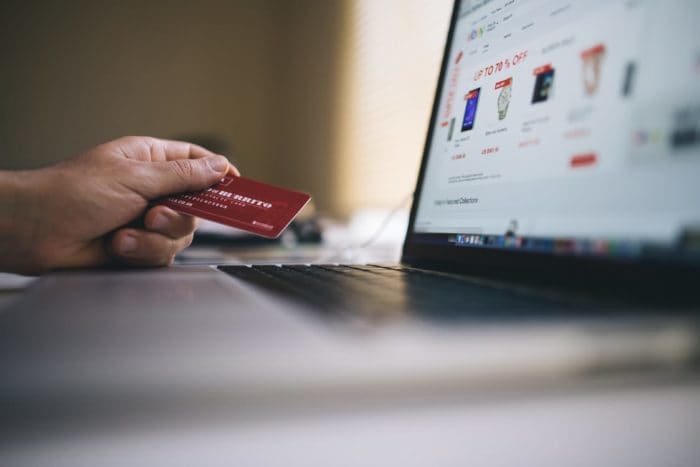Did you MEME to share your personal info?
What’s your Covid-19 Plan? Our plan is to curl up in the fetal position in a supermarket with a...
13 min read
 David Gamey
:
Mar 22, 2023 12:00:00 AM
David Gamey
:
Mar 22, 2023 12:00:00 AM

PCI Attestations of Compliance (AoCs) provide organizations with a tool that helps with the all-important aspects of third-party due diligence. Yet many organizations don’t pay enough attention to the details of the AoCs they rely upon. AoCs are critical when engaging with and monitoring third-parties for PCI compliance. Running an effective compliance program requires at a minimum that you:
Waiting for your annual assessment to discover errors and omissions in these documents may result in delays, changes to your PCI DSS scope, and/or additional assessment activities. In turn this can lead to additional costs, and even non-compliance. This article will help you better understand AoCs and how they support your compliance journey.
Taking proactive steps can pay benefits through smoother validation. We show you key indicators to look for when reading and interpreting an AoC and we provide you with a detailed checklist to evaluate the quality of the AoC and assurance of your third parties. This article was inspired by many organizations and individuals that struggle with this task during assessments. The advice presented here is generally DSS version agnostic and applies equally to 3.2.1 and 4.0 unless specifically called out.
Outsourcing can be one of the simplest ways to reduce your PCI scope. While you can’t outsource the overall accountability for compliance, you can often outsource a lot of the detailed tasks and responsibilities. PCI DSS third party due diligence requires organizations to prove three things:
Without a clear understanding of what services your third party service providers perform for you and if they are validated, you may find you needing to exercise your “right to audit clause” (hopefully you have one) and bear the cost and effort of including that third party within the scope of your PCI assessment. If you are forced down this path, many service providers may resist and be ill prepared to address any non-compliant findings that may arise.
We trust you will find this article and the supporting links at the end under "Learn More" both informative and useful.
An AoC (Attestation of Compliance) is a formal document that attests to the state of compliance of an entity at a point in time. There are different attestation forms that reflect the level of validation and several special self-attestation forms where organizations may be eligible for simplified compliance using a subset of the full requirements of the Data Security Standard (DSS).
AoCs for different compliance footprints:
All AoCs appear similar but they reflect different levels of validation:
You can look at AoCs as reflecting a level of assurance of PCI compliance. These aren’t a formal classification but are used as examples:
An AoC summarizes the scope and results of the assessment which is documented in more detail in the RoC or SAQ. These are generally considered confidential documents and not shared. Note: DSSv4 SAQ’s will require more detail previous versions. Simply checking off requirements will no longer be acceptable.
When accepting AoCs from your service providers PCI does not mandate the type of AoC you must accept, only that you have reasonable assurance it has been completed correctly and covers the services your TPSP is providing. We recommend, as a best practice, that our customers seek TPSPs that perform regular RoCs. We also caution our customers that undergo their own RoCs on the risks of accepting service provider SAQs. While PCI and the card brands do not mandate which type of service provider AoC are accepted, some organizations contractually require their TPSPs to undergo RoCs.
The AoC will tell you many important things including:
Why do we have signed AoCs and formally documented responsibilities:
PCI and the card brands clearly want you to be able to rely on the compliance of third parties. Many processors and acquirers are required to register all service providers to ensure they are aware of the impact they may have to their merchants. Several of the card brands maintain lists of registered third-party service providers and their compliance status.
Provided compliance is properly demonstrated and documented in an AoC, there should be no need to challenge an AoC or inquire further. If you intend to rely upon this documentation, it is your responsibility to review it to ensure it is reasonable and consistent for your organization’s purposes. If there are problems or concerns with the AoC, then we recommend that you get clarification until you are comfortable. You can always contact a QSA company to assist you in understanding the AoCs before your assessment or even as part of your onboarding risk assessment for new third-party service providers.
Surprisingly, many organizations struggle with correctly reading an AoC. Often people simply collect third-party AoCs for their annual assessment. Many barely look past the form for a current date and a signature. Others wait till their assessor reminds them. AoCs are far more than just a tick-box, there is a lot packed into these documents and even assessors can miss nuances.
Here are the things you should be looking at:
Some organizations provide compliance “certificates”. Let’s dispose of these quickly - these are wall art at best, or paper for lining the circular file in your office – they have no actual value or authority and are not recognized by the PCI council, card brands, or QSA/ISA companies. They don't replace an AoC. If your service provider gives you one instead of an AoC, this is a red flag (see below).
If you receive a redacted copy of an AoC from a service provider, you should understand that this is allowed. There is an FAQ (see below) on this that talks about what is and is not permissible to hide. You should review this to make sure it meets your requirements. If needed information has been removed, you need to request a more complete document.
As a trend, we have been seeing more third-parties that need to demonstrate compliance. Part of this has been due to organizations realizing the implications of security impacting services. However, increasingly this is due to a market shift from on-prem to as-a-service solutions. One challenge we see is that some organizations don't realize that shifting who-does-what represents a significant change with compliance implications. This should be caught by an organization's due diligence before the third-party or service is engaged. Beyond understanding how to read an AOC, engaging with your organization's procurement processes is one of the most important thing you can do to protect yourself.
What can you do if you have questions or concerns about an AoC you intend to rely on? It's helpful to remember that problems with AoC’s are usually due to misunderstandings or and assumptions and can be clarified by working through the problem.
If things don’t work out, you may need to temporarily cover the issue inside your own PCI assessment. If it cannot be resolved, you may need to consider changing providers. We’ve seen service providers that will admit they can impact security but steadfastly claim that they don’t need to comply with PCI DSS and refuse to validate. These can be challenging and may take time to resolve.
Patience may be required as we have also seen cases where a service provider just didn’t get it and repeatedly submitted incorrect documentation (expired, incomplete, wrong form, wrong entity, etc.) over an extended period.
In extremely rare cases, you may suspect something further is amiss - in these cases, don’t jump to conclusions, engage all relevant stakeholders including possibly legal.
What happens when none of the options above work. Your service provider won't or can't provide a usable AoC and responsibility document, you can't audit them, or including them in your audit finds non-compliance. Does this result in your organization failing PCI DSS? In short, if you exhaust all options and can still not show compliance - then yes. Note this topic is discussed extensively in the PCI Information Supplement: Third-Party Security Assurance.
Surprisingly, there is confusion in the industry over this possibly because people remember what they want to hear. A careful reading of FAQ #1312 includes:
So, while you may not fail 12.8 as long as you're monitoring compliance, you could still fail other requirements.
While no one wants an organization to fail because of a third party, this needs to be acknowledged as a possibility. At this point, involve your compliance accepting entity, e.g., merchant acquirer, card brand, etc. in a discussion about the path forward. Your service provider will need to be in the loop. Ultimately, whether you continue to work with them or migrate away will depend on these discussions. You also need to work with your procurement and other internal teams to prevent similar failures in future.
We also believe that with the increasing risk of non-compliant service providers, there should be more explicit highlighting of the risk and what is expected from the PCI Council and/or the Card Brands.
More clarification is also desirable about how far this needs to be applied as not all types of service providers have equal risk. Some types of organizations with well defined offerings have their own mature industry regulations that could be more effective to rely upon (e.g. TLS certificate providers are subject to regulations under the CA/Browser Forum) than fitting their operations to PCI DSS. This will be a complex and nuanced discussion that industry needs to have.
We don't expect that you will always take our word for it, so as usual we have provided references and links to other articles and official PCI documents.
Control Gap articles include a mix of analysis and humorous articles designed to drive understanding of key PCI concepts. Our non-compliance lesson series are cautionary tales on how to make your assessments more exciting and unpredictable:
The PCI Council provides a number of useful FAQ's, Information Supplements, and Guidance documents:
The PCI Council maintains lists of variety of validated solutions, applications, devices. The purpose of these lists is to provide reliable information on compliant solutions that can help reduce risks and ease your compliance burden:
Brands maintaining lists of compliant service providers:

 CG Blogger :
Apr 1, 2020 10:07:00 PM
CG Blogger :
Apr 1, 2020 10:07:00 PM
What’s your Covid-19 Plan? Our plan is to curl up in the fetal position in a supermarket with a...

 Ben Rediboim :
Dec 9, 2020 10:07:00 PM
Ben Rediboim :
Dec 9, 2020 10:07:00 PM
Attention Windows sysadmins: search for "LLMNR" and once you've finished panicking, then get that...

 David Gamey :
Sep 19, 2017 12:00:00 AM
David Gamey :
Sep 19, 2017 12:00:00 AM
Many Canadians traveling to the US have experienced the frustration of running into a form of...